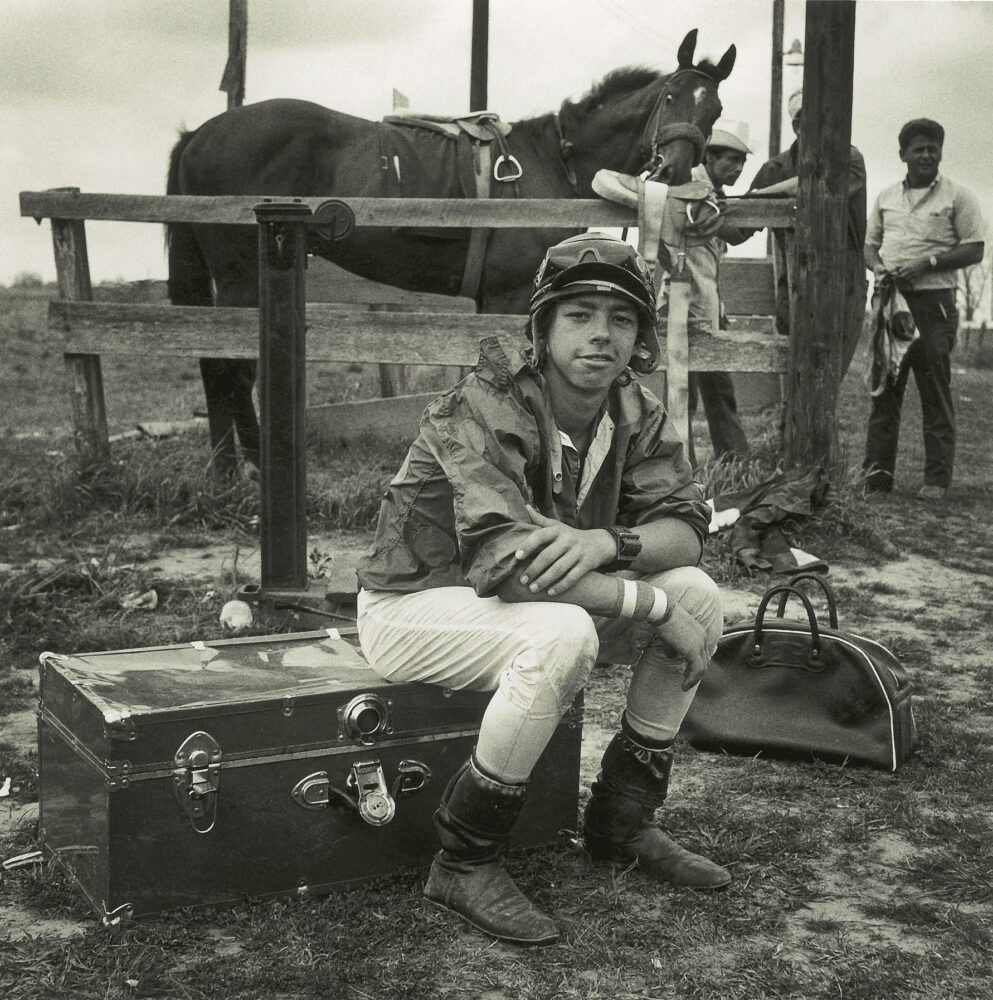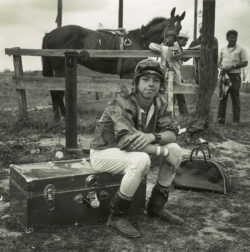Turner Browne
Turner Browne, a still photographer and cinematographer, is best known for "Louisiana Cajuns/Cajuns de la Louisiane," published in 1977.

Courtesy of Turner Browne
Mark Guidry- Bush Track Jockey. Browne, Turner (Photographer)
Turner Browne is a still photographer, cinematographer, and student of the medium’s history who has produced finished and professional products in all three of those arenas. Born on July 6, 1949 in Lake Charles, Browne attended Louisiana State University in Baton Rouge in 1969 and 1970, and is self-taught in photography. His photographs of Louisiana’s Cajuns and their environment, Louisiana Cajuns/Cajuns de la Louisiane (published in 1977), provided a photographic update of this world that had not been systematically undertaken in decades, and was accompanied by a bilingual text in English and French.
In 1973, the Sunflower Foundation of Santa Barbara, California, awarded Browne a grant, which he used to begin work on his photographs of the people and places in Louisiana’s Acadiana parishes. The work was published four years later by Louisiana State University Press and included seventy-seven black-and-white photographs. Browne’s photographs captured aspects of a Cajun way of life that were already in decline as his photographs were made: a portrait of a Mrs. Gary, who at 93 spoke only French and still spun yarn and wove cloth on a traditional wheel and loom; or the activities of the last operating moss gin in the United States, in Labadieville, Louisiana. An exhibition based on the project and organized by the French Institute in New York City gave the project national exposure in a 1987 tour. In 2000 Browne donated the negatives from his Louisiana Cajuns project to the Library of Congress in Washington, D.C.
In 1977, the same year as publication of Louisiana Cajuns/Cajun de la Louisiane, a documentary film for which he served as cameraman was released. Titled The New Klan, it portrayed David Duke’s attempts to revitalize the Ku Klux Klan. In 1979 Browne served as director of photography for Only Once in a Lifetime, a Hispanic feature film by director Alejandro Grattan that was screened at the Kennedy Center in Washington, D.C., and won honors at the film festival in Deauville, France. Browne’s major contribution as an historian of photography is the publication of Photographic Artists and Innovators (1983). Browne and coauthor Elaine Partnow compiled a biographical dictionary of some 2,000 figures—photographers, artists, inventors, curators, critics—important in the advancement of photography from 1839 until 1980, including Louisiana photographers Clarence John Laughlin and Dean Dablow.
Browne went on to publish another book of photographs in 1993. The Last River incorporated sixty-seven of his photographs to describe the disappearing lifestyle along the White River in Arkansas, precipitated by changes caused by the Corps of Engineers modifications to the waterway. The book was published by the University of Arkansas Press. A resident of Louisiana during much of the 1980s, Turner Browne now resides in the San Fernando Valley in Southern California.
